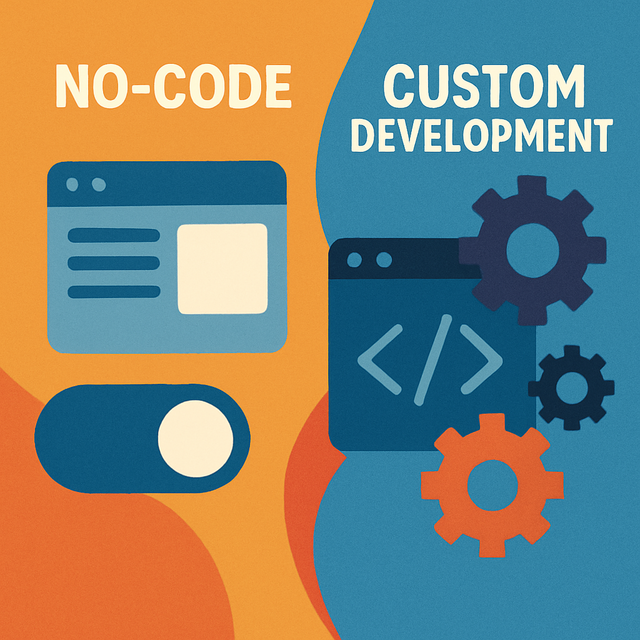Should You Build with No-Code or Go Fully Custom?
If you’re a founder or decision maker about to build a web or mobile product, this question’s probably keeping you up at night.
No-code and low-code platforms like Webflow, Bubble, or Glide promise fast results at a fraction of the cost. But will they scale with your business? Will they trap you with hidden costs later? And when is hiring a dev team the smarter investment?
🔹 No-Code Tools: Fast-but Risky if Misused
Pros:
- Rapid prototypes and MVPs
- Lower upfront costs
- Some features built visually-no coding knowledge needed
Cons:
- Limited customization
- Tricky (or impossible) to scale
- Downtime and performance tied to their platform
- ‘Locked in’-hard to switch once you start
🔹 Custom Development: Tailored and Future-Proof-but Requires Planning
Pros:
- Fully customizable product, built around your vision
- Easier to scale in the long run
- Transparent ownership of your data and code
Cons:
- Higher initial cost
- Longer timelines
- Requires a trusted development partner
🚩 Common Cost Traps to Watch For
Many founders think they’ll “save money” with no-code-but unexpected limitations often lead to rebuilding later. Think:
- Integrations that only half-work
- Monthly fees piling up as you grow
- Hitting platform limits (e.g., users, payment flows, data storage)
On the flip side, some custom builds balloon in cost because of unclear requirements or technical overengineering. The key? Vet your team, plan your scope, and prioritize features.
💡 When to Choose What?
✅ Choose no-code if you’re:
- Prototyping fast to explore an idea
- Testing a concept with real users
- Building internal tools with low complexity
✅ Choose custom if you’re:
- Launching a customer-facing product you plan to grow
- Handling sensitive data (e.g. health, finance)
- Integrating deeply with other platforms
- Needing flexibility for future features
The Bottom Line
No-code can be a great launchpad. But some of the most expensive rebuilds I’ve seen began as “quick fixes” on no-code platforms. Know your goals, map your next 12–24 months, then choose the path that truly fits.
If you’re wrestling with the platform decision or planning a digital product for your business, I’m always happy to chat. Feel free to reach out.
